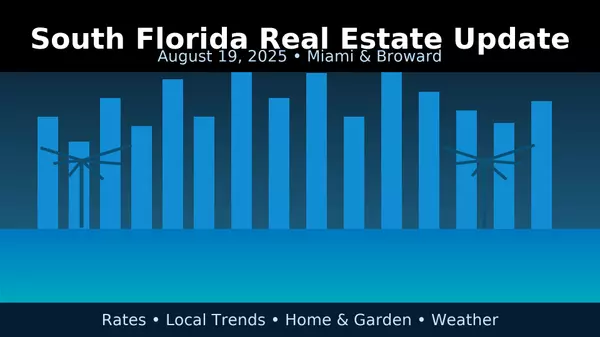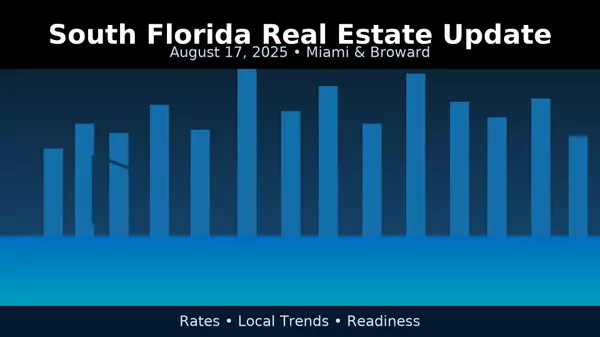So You Found the House of Your Dreams – What’s the Next Step?

So You Found the House of Your Dreams – What’s the Next Step?
Finding the perfect home is an exciting milestone in the home-buying process. After countless hours of searching, visiting properties, and dreaming about your ideal space, you’ve finally found “the one.” But what happens next? While discovering your dream home is an important achievement, the process isn’t over yet. There are several critical steps to take before the keys are officially yours.
In this blog, we’ll walk you through what to expect after finding the house of your dreams and outline the key actions you need to take to successfully move forward.
1. Get Pre-Approved for a Mortgage: The First and Most Important Step
Before you can even think about making an offer on the home of your dreams, the most critical step is to get pre-approved for a mortgage. Why is this so important? Without a pre-approval letter, you risk losing out on the property to other buyers who are already pre-approved, or worse, you might find out that the home is out of your budget after spending months—or even years—searching.
Why Pre-Approval Matters:
- Know Your Budget: Getting pre-approved helps you understand exactly how much the bank is willing to lend you. This is crucial because it gives you a clear idea of the price range you can afford. If you don’t get pre-approved and jump straight into home shopping, you could fall in love with a house that’s beyond your budget, wasting precious time and energy.
- Avoid Delays: The pre-approval process can take several days, as it requires gathering and submitting financial documents like recent pay stubs, tax returns, and bank statements. During this time, if you haven’t been pre-approved and find your dream home, another buyer with pre-approval might swoop in and make an offer before you even have a chance to secure financing.
- Strengthen Your Offer: Sellers typically won’t consider an offer unless it’s accompanied by a pre-approval letter. This letter shows that you’ve been vetted by a lender and are a serious buyer with the financial backing to purchase the property. Without it, your offer is likely to be ignored in favor of buyers who are already pre-approved.
In short, pre-approval is your ticket to making a competitive and timely offer. Without it, you could lose the home to someone else, or worse, find yourself emotionally invested in a property that you later discover you can’t afford. It’s essential to get pre-approved early in the process, before you even begin viewing homes.
2. Submitting an Offer
Once you’ve been pre-approved and found the home you love, the next step is to submit an offer to the seller. Your real estate agent will help you craft an offer based on factors such as:
- The asking price of the home
- Recent sales of comparable properties in the area
- Market conditions (Is it a buyer’s market or a seller’s market?)
- Your budget and financing options
It’s important to work closely with your agent during this step, as they’ll provide valuable guidance on making a competitive offer. You’ll need to decide on the offer price, any contingencies (such as financing or inspections), and the timeline for closing. Once the offer is submitted, the seller will either accept, reject, or counter your offer.
Key Tip:
In a competitive market like Miami, where homes can go under contract quickly, having a pre-approval letter from your lender strengthens your offer and shows the seller that you’re serious and capable of purchasing the home.
3. Offer Acceptance and Escrow
If the seller accepts your offer, you’ll move on to the next step: escrow. Escrow is essentially a neutral third party that holds funds and important documents related to the transaction until all conditions are met.
During this stage, you’ll be required to provide an earnest money deposit, which typically ranges from 1% to 3% of the home’s purchase price. This deposit shows the seller that you are committed to buying the home. If the deal falls through due to certain contingencies, such as failing the inspection, you can usually get your deposit back.
4. Home Inspection
After your offer is accepted, you’ll enter the inspection period, which typically lasts between 5 and 15 days. This step is crucial to ensure that the home is in good condition and free from major issues.
You’ll need to hire a professional home inspector to thoroughly evaluate the property. The inspector will check important aspects such as:
- The structural integrity of the home
- The condition of the roof
- Plumbing and electrical systems
- Heating and cooling systems
- Possible signs of pest infestations or mold
Key Tip:
As the buyer, you’ll be responsible for covering the cost of the home inspection, which typically ranges from $300 to $1,000, depending on the size and location of the property. This investment is worth it to avoid any unexpected surprises after moving in.
5. Negotiating Repairs or Credits
Once the inspection is complete, you’ll receive a detailed report outlining any issues with the home. If significant problems are uncovered, you have several options:
- Request repairs: You can ask the seller to fix specific issues before closing.
- Ask for a credit: Instead of requesting repairs, you might ask for a credit toward closing costs to cover the cost of repairs yourself.
- Accept the property as-is: If the issues are minor or don’t affect your decision to move forward, you can accept the home in its current condition.
- Walk away: If the inspection reveals major problems that make you uncomfortable, you can back out of the deal and receive your earnest money deposit back (as long as you are within the inspection contingency period).
6. Appraisal and Financing
After the inspection period, your lender will require a home appraisal. The purpose of the appraisal is to confirm that the home is worth the amount you’ve agreed to pay. The lender will only approve the loan if the appraisal matches or exceeds the purchase price.
If the appraisal comes in below the agreed-upon price, you may need to:
- Negotiate a lower price with the seller
- Make up the difference by paying more out of pocket
- Walk away from the deal if the seller refuses to adjust the price and you don’t want to cover the gap
At this point, your lender will also finalize your mortgage approval. It’s important to avoid making any major financial changes during this time, such as taking on new debt or changing jobs, as this could affect your loan approval.
7. Title Search and Insurance
The next step is to conduct a title search. This process ensures that the seller has the legal right to sell the property and that there are no outstanding liens, unpaid taxes, or other legal claims against the home. You’ll also need to purchase title insurance, which protects you from potential title disputes after the sale.
Your real estate agent or title company will handle this process, but it’s important to ensure the title is clear before moving forward with the transaction.
8. Final Walk-Through
In the days leading up to the closing, you’ll have the opportunity to do a final walk-through of the home. This is your chance to ensure that the property is in the agreed-upon condition, that any requested repairs have been completed, and that no new issues have arisen.
The final walk-through is typically done 24 to 48 hours before closing.
9. Closing the Deal
The final step in the home-buying process is the closing. This is when the ownership of the property is officially transferred from the seller to the buyer. During the closing, you’ll:
- Sign all the necessary documents, including the mortgage agreement and title transfer
- Pay your closing costs, which typically range from 2% to 5% of the home’s purchase price. Closing costs include lender fees, title insurance, property taxes, and any prepaid interest.
- Receive the keys to your new home!
After closing, you’re officially a homeowner, and the house is yours!
Final Thoughts
While finding the home of your dreams is a huge accomplishment, it’s important to understand that the process doesn’t end there. The steps that follow—getting pre-approved, submitting an offer, conducting inspections, finalizing financing, and closing—are just as critical to ensuring a smooth and successful transaction.
Getting pre-approved for a mortgage early in the process is one of the most important things you can do to set yourself up for success. It gives you the clarity and confidence you need to act quickly, avoid wasting time, and make competitive offers. From offer to closing, each stage is designed to protect your interests and ensure that the home you’ve chosen is truly the right one for you.
If you’re ready to take the next step toward homeownership, feel free to reach out to me, William Gartin, at 305-842-6097. I’ll guide you through every stage of the process and make sure that your home-buying experience is as smooth and successful as possible. Let’s make your dream home a reality!
Categories
Recent Posts










